Abstract
A placebo-controlled influenza vaccination trial was carried out on 374 children in the winter of 1967-68. The children were randomly vaccinated with 300 CCA of A2/England/1/1966, 300 CCA of A/equine 2/Miami/1963, or with a placebo. During this winter an influenza outbreak occurred, caused by A2/Nederland/1968. The A2 vaccine yielded a protection rate of 58% (P = 0.02) and the A/equine 2 vaccine a rate of 19% (P = 0.33). Serological data revealed that all influenza infections occurred in subjects who had a pre-epidemic haemagglutination inhibition titre below 150. The antibody response against various human influenza A2 viruses and against the horse strain (A/equine 2) is discussed.
Full text
PDF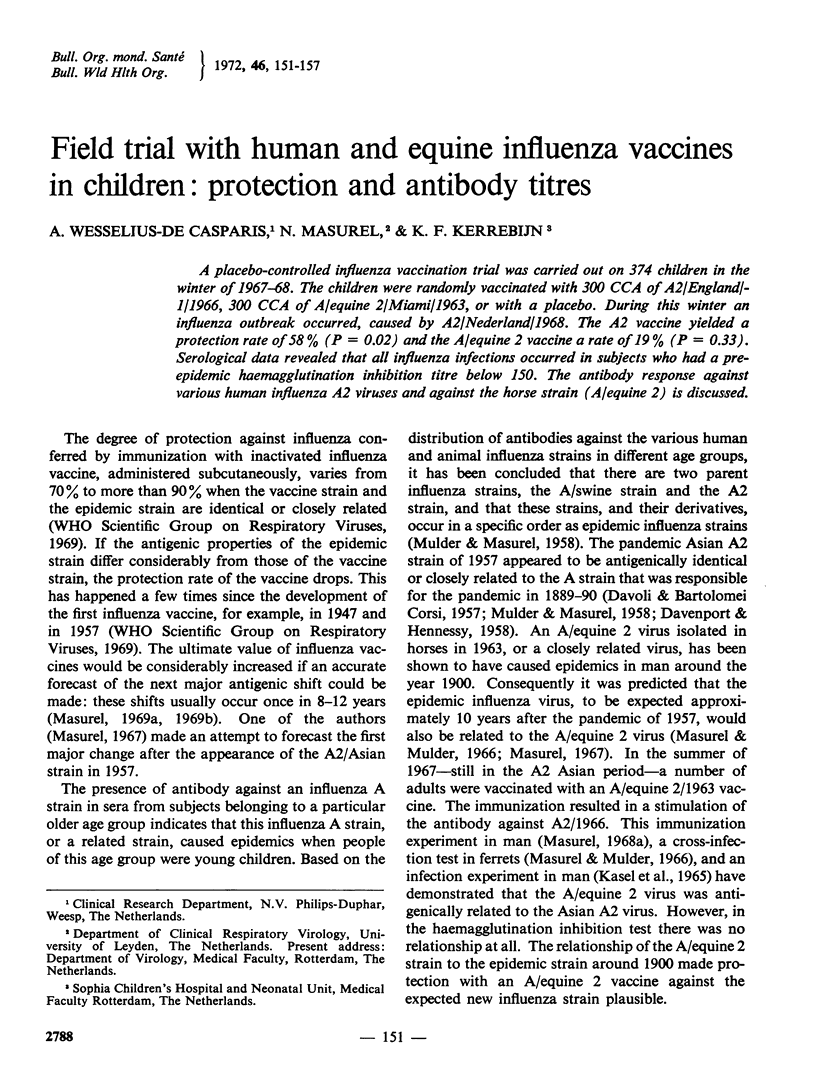
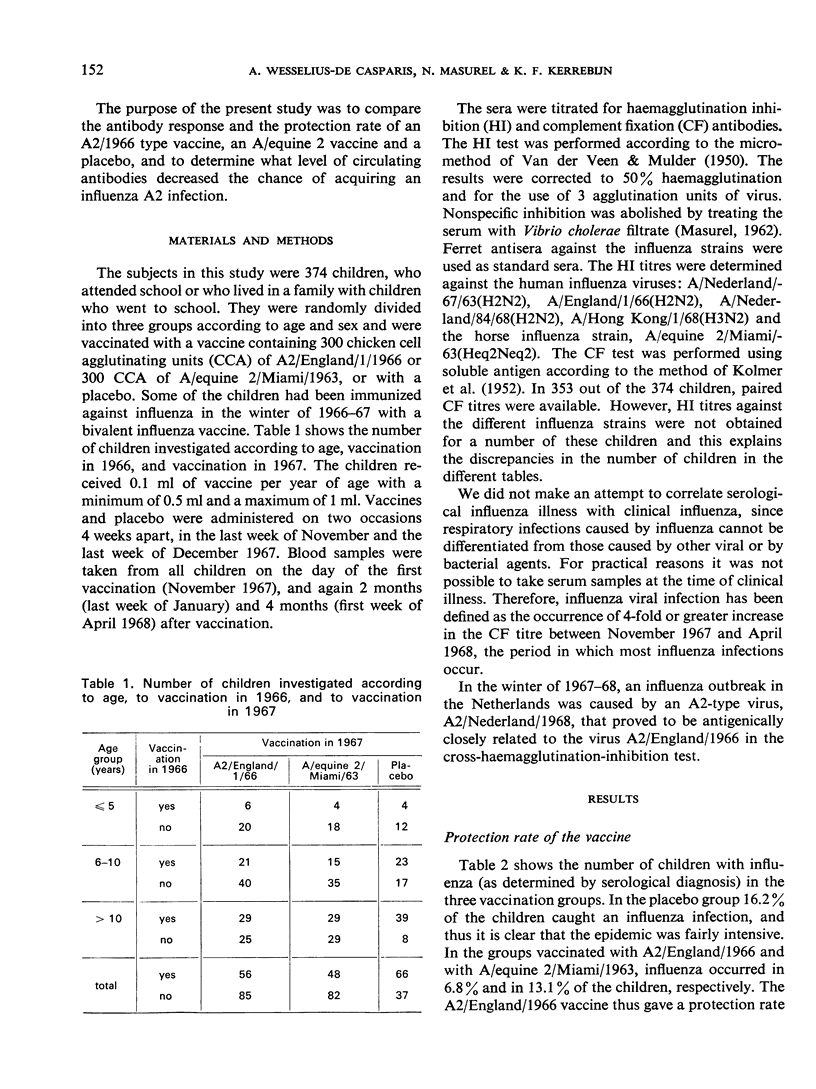
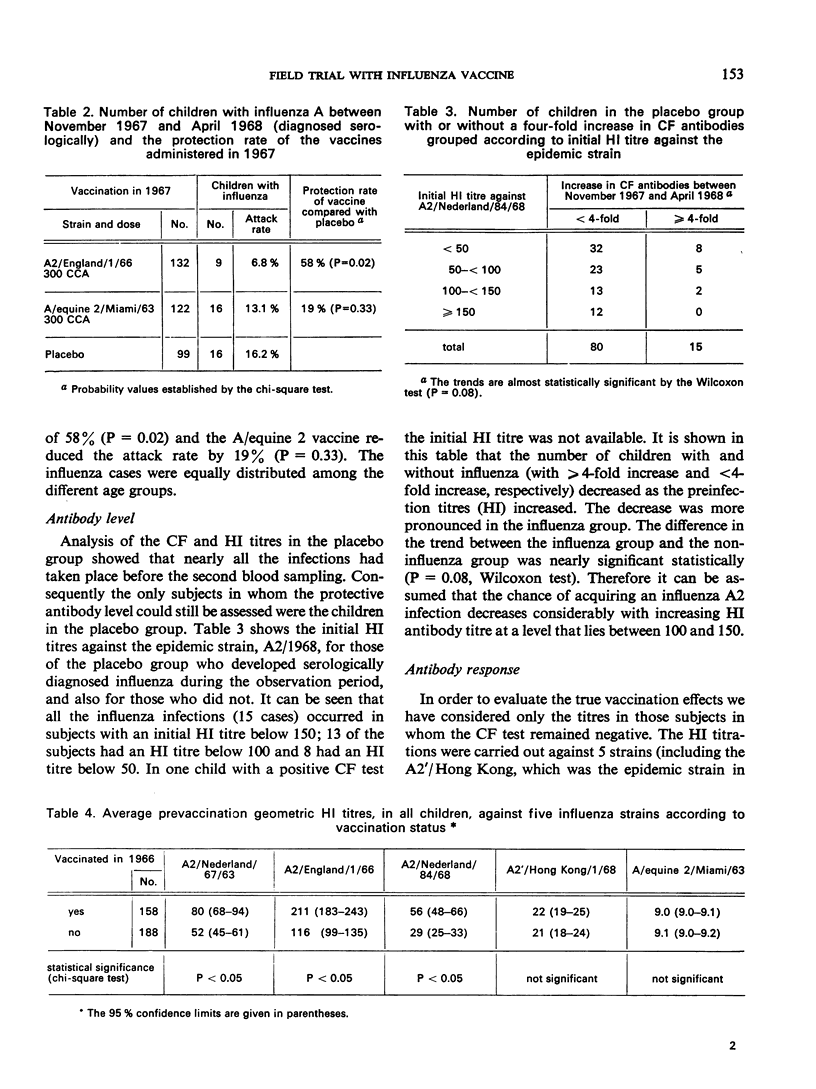
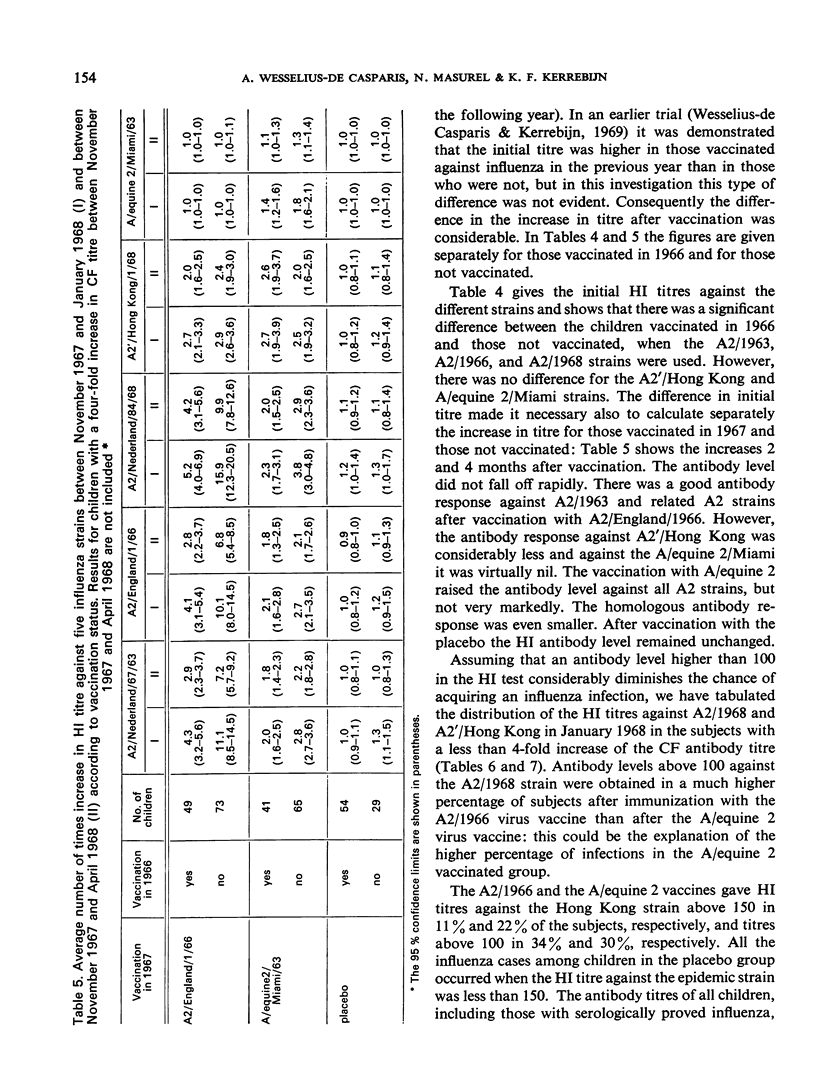
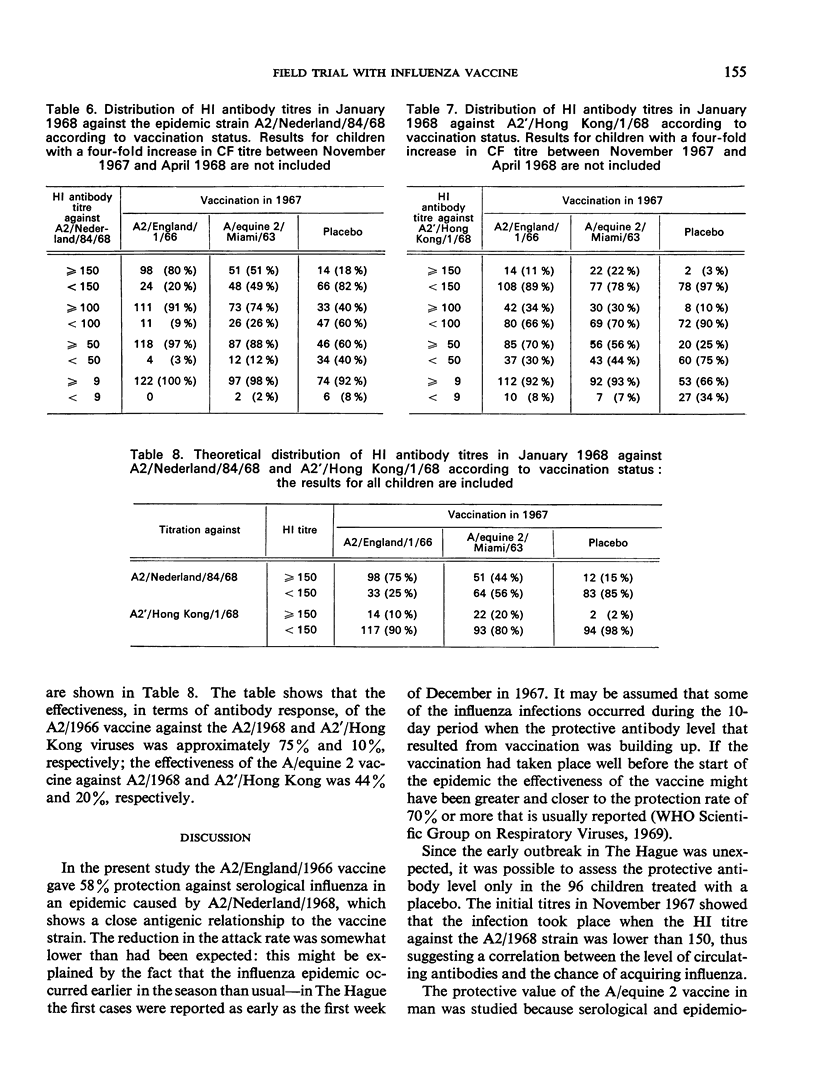
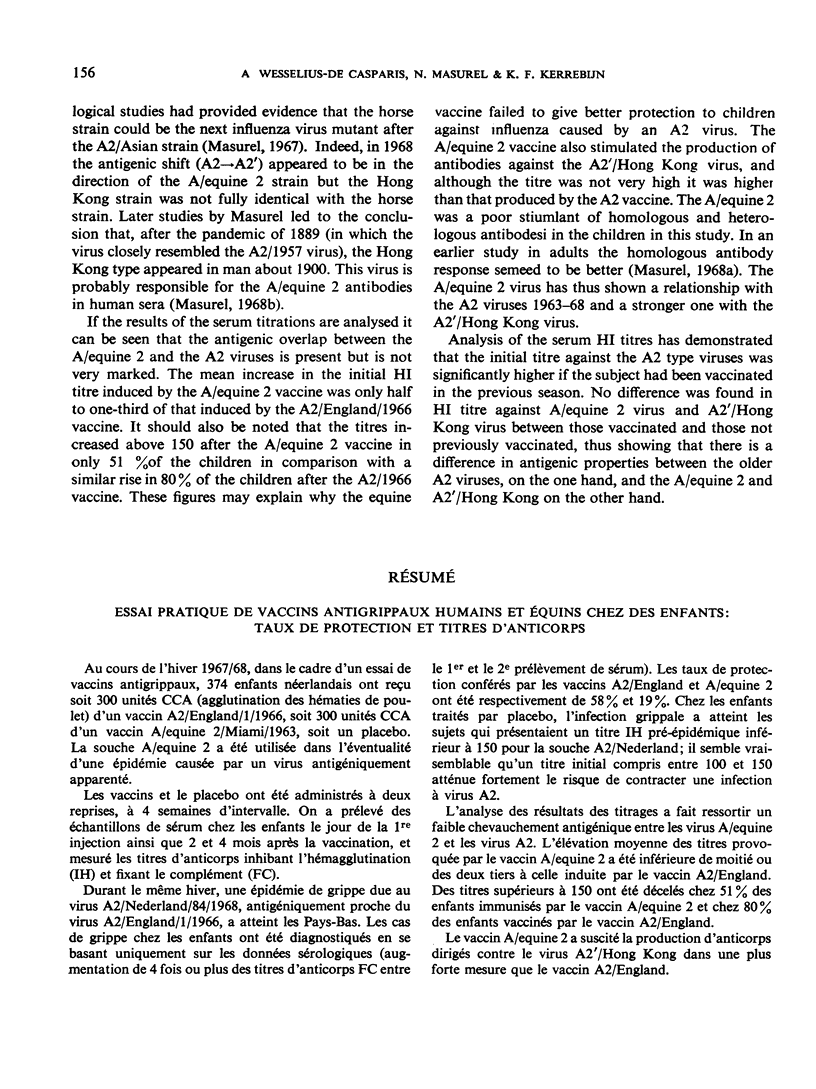
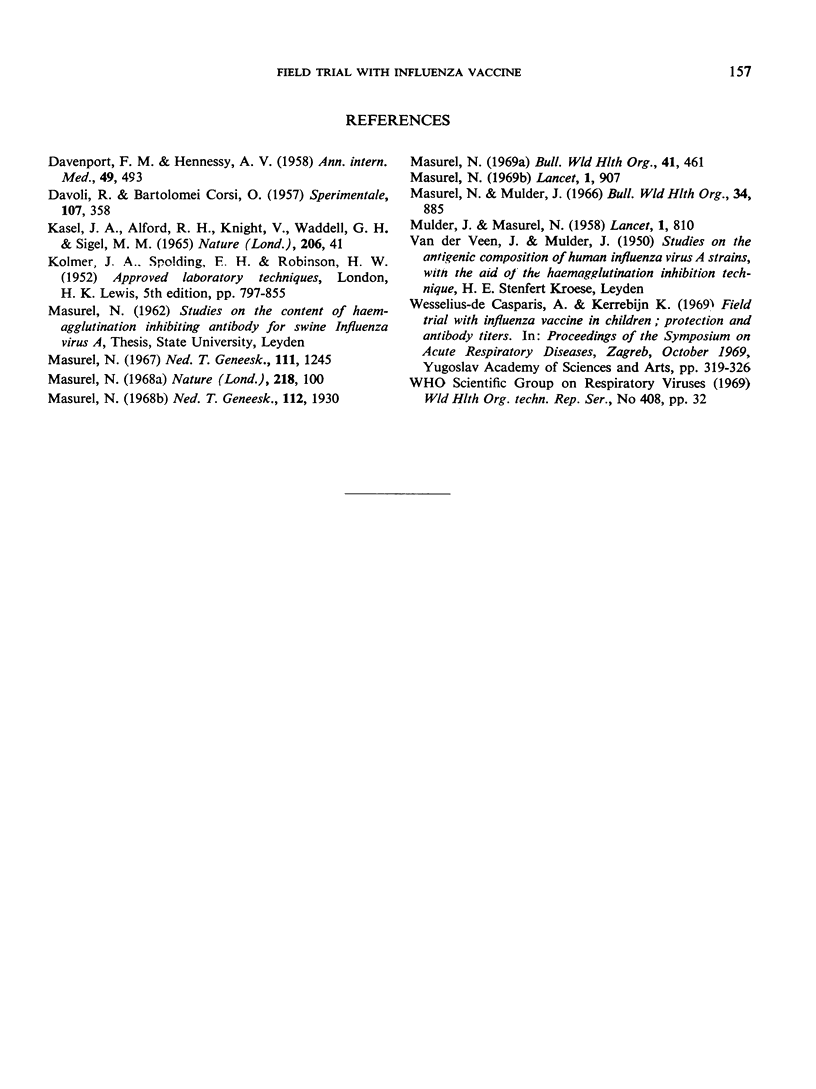
Selected References
These references are in PubMed. This may not be the complete list of references from this article.
- DAVENPORT F. M., HENNESSY A. V. The clinical epidemiology of Asian influenza. Ann Intern Med. 1958 Sep;49(3):493–501. doi: 10.7326/0003-4819-49-3-493. [DOI] [PubMed] [Google Scholar]
- DAVOLI R., CORSI O. B. Anticorpi verso virus dell'influenza A-Asia nella poplazione normale. Sperimentale. 1957 Sep-Oct;107(5):358–362. [PubMed] [Google Scholar]
- KASEL J. A., ALFORD R. H., KNIGHT V., WADDELL G. H., SIGEL M. M. EXPERIMENTAL INFECTION OF HUMAN VOLUNTEERS WITH EQUINE INFLUENZA VIRUS. Nature. 1965 Apr 3;206:41–43. doi: 10.1038/206041a0. [DOI] [PubMed] [Google Scholar]
- MULDER J., MASUREL N. Pre-epidemic antibody against 1957 strain of Asiatic influenza in serum of older people living in the Netherlands. Lancet. 1958 Apr 19;1(7025):810–814. doi: 10.1016/s0140-6736(58)91738-0. [DOI] [PubMed] [Google Scholar]
- Masurel N. Antibody response obtained by vaccination with the influenza A-Equi 2 virus in man. Nature. 1968 Apr 6;218(5136):100–101. doi: 10.1038/218100a0. [DOI] [PubMed] [Google Scholar]
- Masurel N. Een nieuwe verschijningsvorm van het influenza-A-virus. Ned Tijdschr Geneeskd. 1968 Oct 19;112(42):1930–1932. [PubMed] [Google Scholar]
- Masurel N. Het influenza-A-virus als verwekker van pandemieën en epidemieën. Ned Tijdschr Geneeskd. 1967 Jul 15;111(28):1245–1247. [PubMed] [Google Scholar]
- Masurel N., Mulder J. Studies on the content of antibodies for equine influenza viruses in human sera. Bull World Health Organ. 1966;34(6):885–893. [PMC free article] [PubMed] [Google Scholar]
- Masurel N. Relation between Hong Kong virus and former human A2 isolates and the A-EQU12 virus in human sera collected before 1957. Lancet. 1969 May 3;1(7601):907–910. doi: 10.1016/s0140-6736(69)92544-6. [DOI] [PubMed] [Google Scholar]
- Masurel N. Serological characteristics of a "new" serotype of influenza A virus: the Hong Kong strain. Bull World Health Organ. 1969;41(3):461–468. [PMC free article] [PubMed] [Google Scholar]


